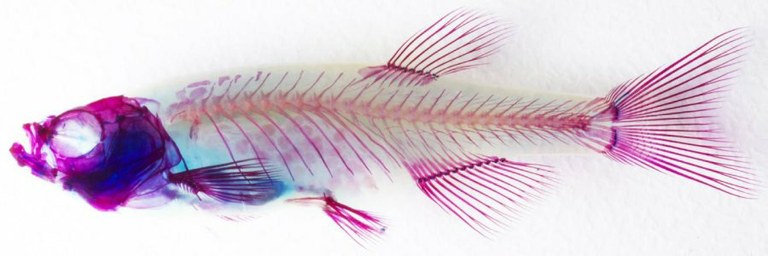Scientists previously thought the type of lubricated joint called a synovial joint evolved after sea animals made their way onto land because of the rigors of terrestrial mobility. However, USC researchers believed that mobility through water also puts considerable stress on joints, so synovial joints may also prove useful underwater. Might fish have similar joints?
Sure enough, by using CT scans and genetic tools, the researchers were able to identify joints in the jaws and fins of zebrafish, gar, and stickleback that are very similar to mammalian synovial joints. Subsequently, the team discovered that these fish joints also produce a protein called Lubricin that is also very similar to the protein that lubricates synovial joints in humans. And like humans, fish lacking this protein in their joints can develop early onset arthritis.
“Creating the first genetic osteoarthritis model in a fish is exciting,” said Gage Trump, senior author for the upcoming paper. “Going forward, it will be fascinating to explore whether the zebrafish, which is well known for its regenerative abilities, can also naturally repair its damaged joints.”
The study will be published in eLife on July 19, 2016.










0 Comments